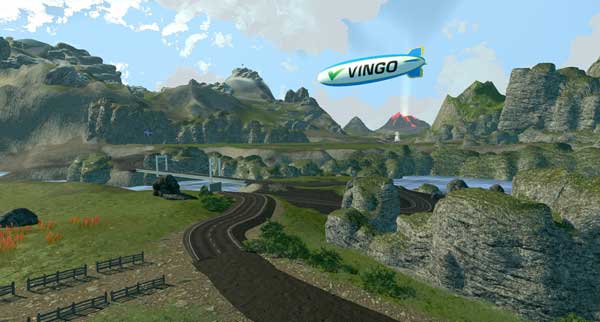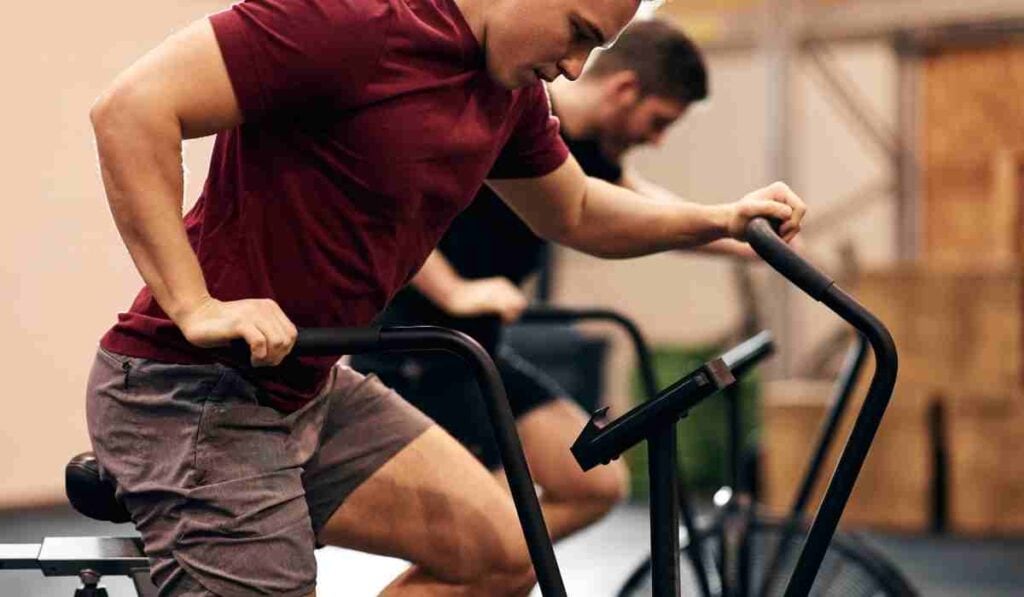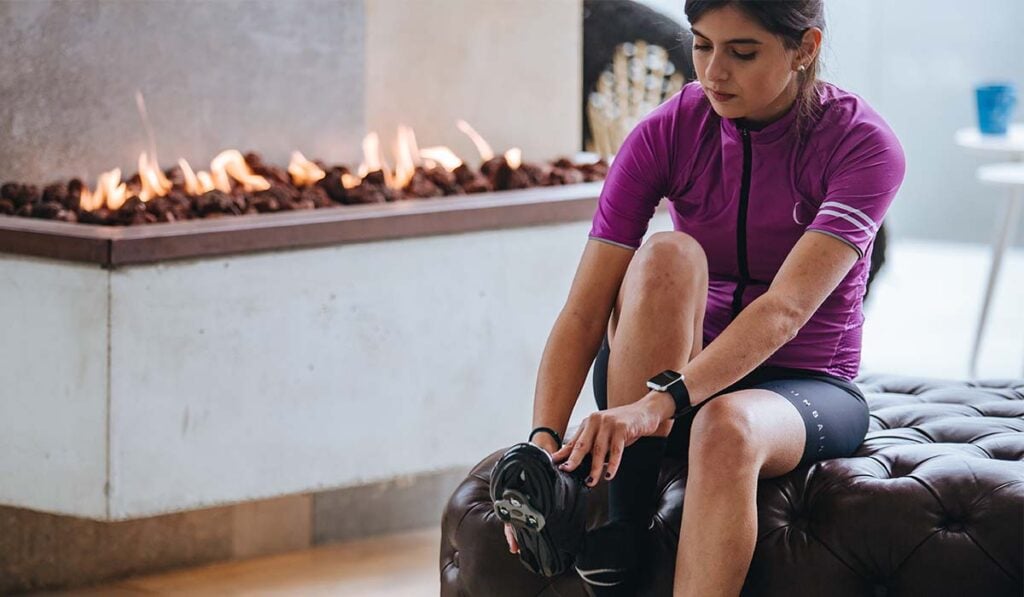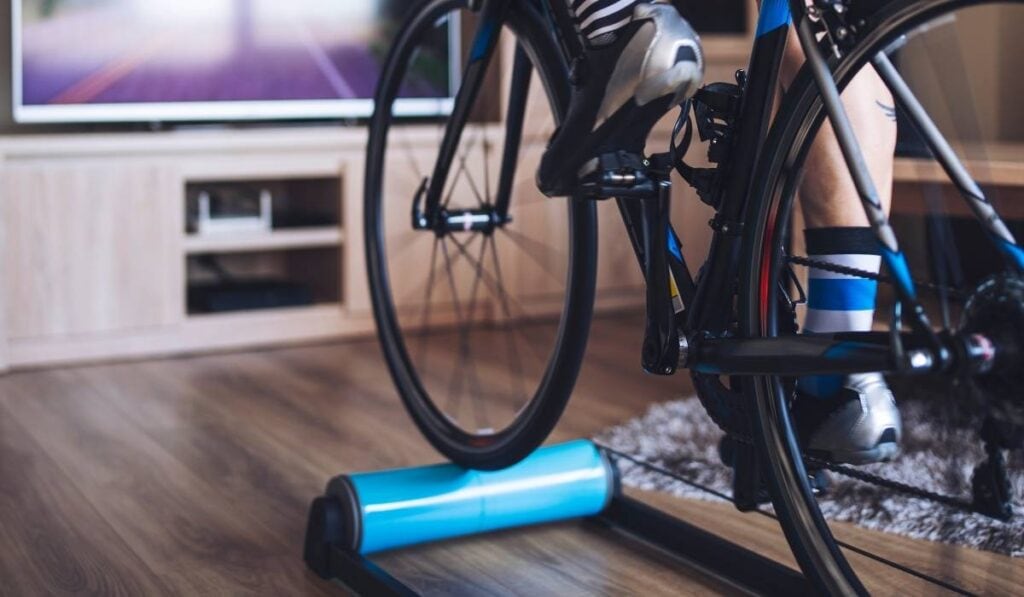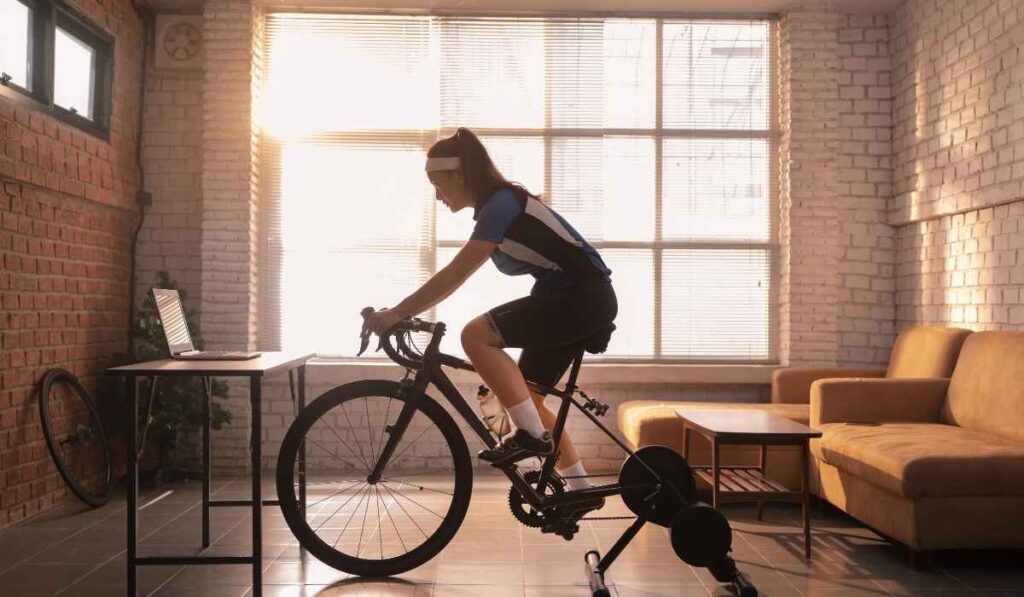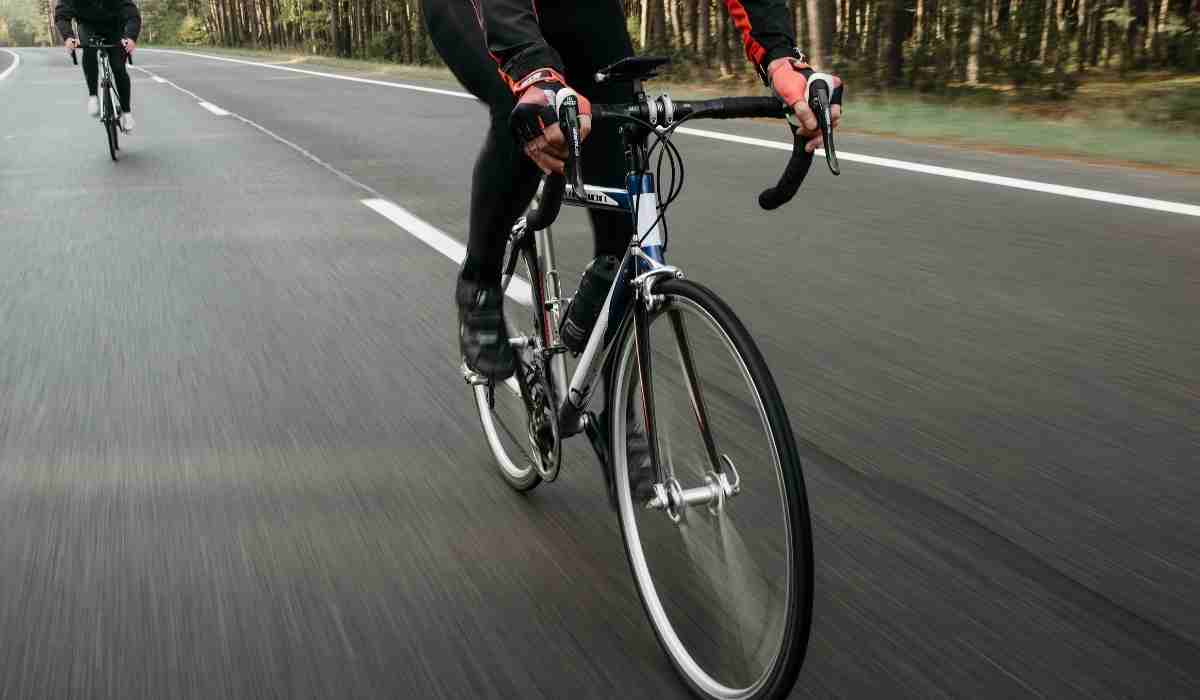
15 Tips to Enjoy Cycling in the Fall
- 1. Always check the weather.
- 2. Stay dry.
- 3. Dress appropriately.
- 4. Consider water-resistant shoes.
- 5. Stay visible.
- 6. Wear gloves.
- 7. Protect your belongings with a waterproof bag.
- 8. Clean your chain more often.
- 9. Install fenders on your tires.
- 10. Watch for additional obstacles on the road.
- 11. Set new cycling goals for yourself.
- 12. Plan high-altitude rides carefully.
- 13. Consider changing your tires.
- 14. Stay hydrated.
- 15. Ride indoors with Vingo.
- Key Takeaways:
Autumn is one of the best times to cycle, with the colorful scenery of changing leaves and a gorgeous natural backdrop to enjoy as you ride. However, along with fall cycling comes with some challenges, like more inclement weather and rain, cooler temperatures, and shorter days. Use these helpful tips to make the most of the fall cycling season and stay safe.
1. Always check the weather.

Autumn weather can be unpredictable. Whether you’re headed out on a long-distance ride or a short cycling adventure around the block, take a peek at the weather forecast first. That way, you can adjust your timing, clothing, or overall training plans if needed.
2. Stay dry.

If you’re cycling outdoors in the fall, you’re much more likely to encounter rainy weather, which can be a significant obstacle. Good rain gear will help you stay as dry as possible when you’re commuting to work, out for a leisurely ride, or training for your next race. Invest in a lightweight, waterproof, and breathable jacket for those rainy fall days, and tuck a waterproof rain jacket away in your pocket just in case it downpours.
3. Dress appropriately.
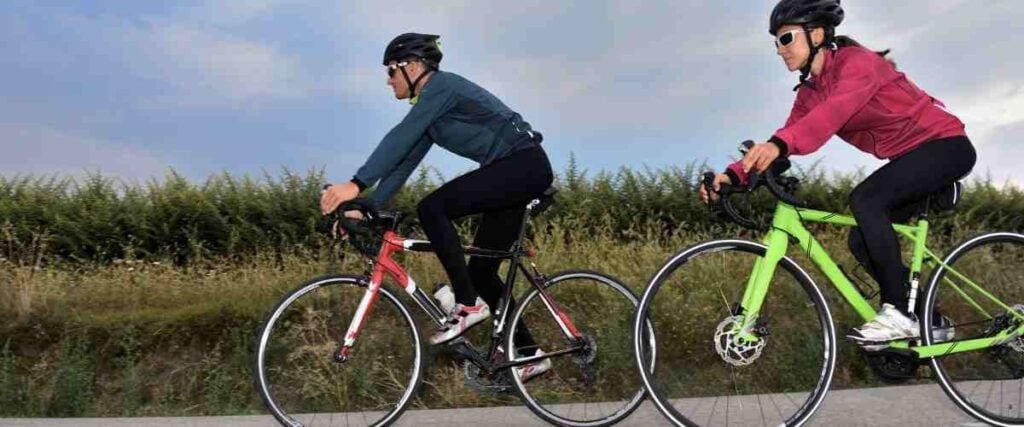
In the fall, it can be much cooler during the morning hours than later in the afternoon. The best way to prepare for this is to layer your clothes when you head out for a ride. Start your ride wearing a windproof jacket or arm and leg warmers. As the weather warms up, you can strip off your layers and avoid overheating so your ride is more comfortable and enjoyable, regardless of the temperature outside. If you decide to cycle indoors to avoid inclement weather, here’s our guide on what to wear while indoor cycling.
4. Consider water-resistant shoes.

Winter cycling shoes are a worthy purchase if you’re dedicated to fall cycling. However, waterproof shoe covers can also do wonders to protect your tennis shoes when riding in the fall. A high-quality pair of overshoes will keep your feet warm and dry in the worst weather conditions, so you never have to worry about frozen toes, soggy socks, or ruined shoes, no matter what the weather decides to do.
5. Stay visible.

With fewer daytime hours to work, cycling in the fall can get tricky, especially if your work schedule requires you to fit in early morning or evening rides. To stay safe, fit a few bike lights to the frame of your bicycle and wear highly visible clothing with reflective inserts so vehicles, pedestrians, and other cyclists can easily see you in the dark.
6. Wear gloves.

Light gloves are ideal when cycling in the fall because strong winds and rain can do a number on your hands, leaving them numb and cold at the end of your ride. Consider using light leather gloves or fast-drying neoprene gloves for cycling. There are plenty of waterproof and lightweight options that are ideal for the cooler weather. Take some time to shop around and find what works best for you.
7. Protect your belongings with a waterproof bag.
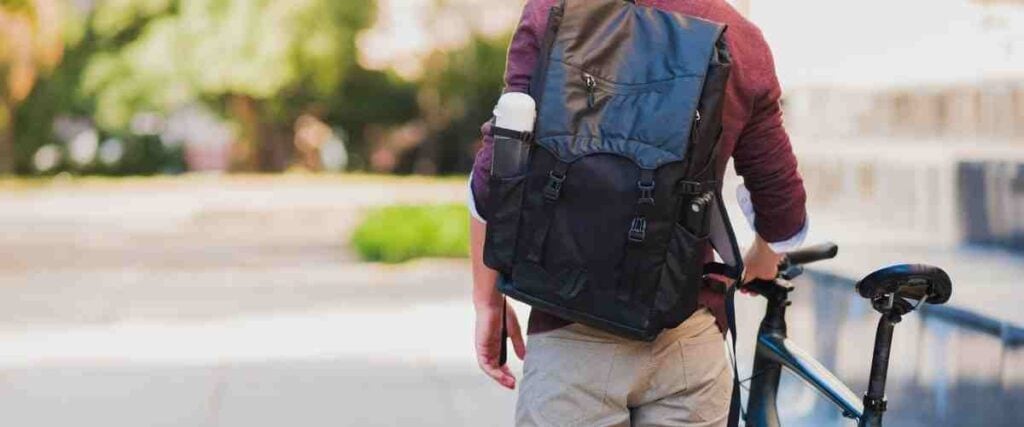
If you’re one of the many cyclists who use their bike to commute to work daily, consider purchasing a waterproof bag to protect your bag, laptop, lunch box, and other belongings you regularly take to the office with you. Fold up the bag and keep it tucked away in your jacket pocket or on your bike. You’ll be so glad you have it on those rainy fall days!
8. Clean your chain more often.
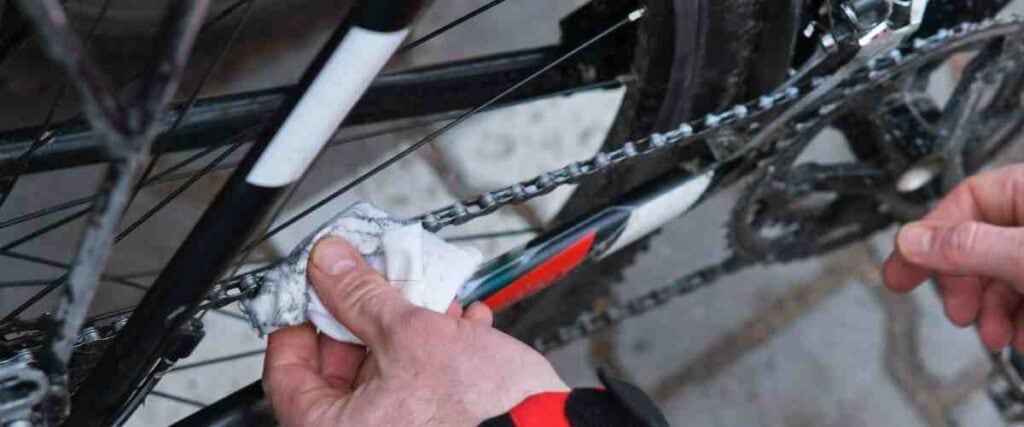
If you cycle frequently during autumn, you’re bound to ride on wet and dirty roads more often. As a result, your bike, particularly the chain, will get covered in dirt and grime. To keep your bicycle riding smoothly, clean your chain frequently and wipe down the body of your bike after each ride. If your bike stays coated in a layer of grime, you’ll inevitably need more repairs, and your clothes will get dirty when you hop on the saddle, too! (Not ideal if you’re commuting to work.)
9. Install fenders on your tires.

Although installing fenders on your bike can be somewhat of a hassle, it’s well worth the effort for fall cycling. Fenders cover your bike tires to protect you from getting splattered with rain so that you won’t arrive at your destination with water all over your back, face, or arms. Installing a fender on your front and back tire is relatively simple, and you can purchase them online or at your local bike shop. Just make sure to get the right fender to fit your bike.
10. Watch for additional obstacles on the road.

In the fall, you’ll need to watch out for extra obstacles like leaves, deep puddles, and fallen fruit on the ground. For instance, depending on where you live and cycle, you might need to dodge crabapples, citrus fruits, acorns, and other fruits that your local trees shed in autumn. Puddles can also be tricky because if you’re riding on an unfamiliar road, they might be much deeper than anticipated. Try to steer clear of them whenever possible, just in case.
11. Set new cycling goals for yourself.
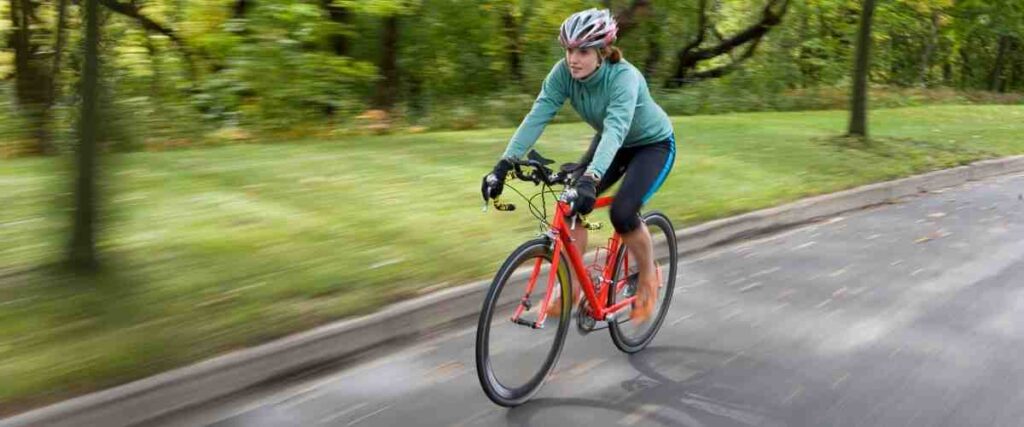
Since you may not be able to ride some of your usual routes or cycle as frequently as you want due to inclement weather, fall is a great time to focus on other related goals. For example, you might focus on maintaining a healthier diet, incorporating strength training into your weekly workout routine, or improving your VO2 max with indoor HIIT cycling workouts.
12. Plan high-altitude rides carefully.

Again, depending on where you live and ride, this may or may not apply to you, but if you plan to do any fall cycling at higher altitudes in the fall, proceed with caution. Temperatures are much cooler at higher altitudes, and the air is thinner, making it harder to breathe. Additionally, you might have to contend with layers of ice, which can make a cycling route treacherous, particularly when you’re cycling downhill. Plan ahead so you know what type of weather conditions you may face, what kind of clothing you should wear, and if there are any particular areas along the route you should avoid entirely.
13. Consider changing your tires.
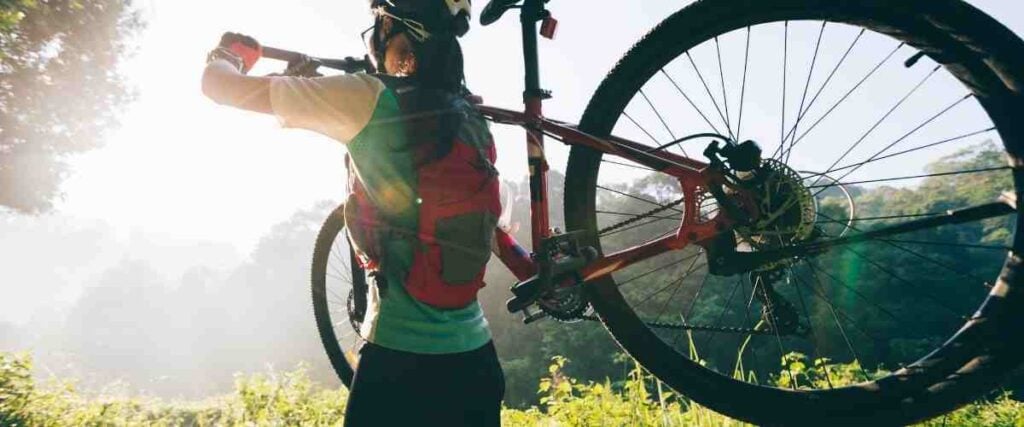
Swapping out your tires for all-season tires may give you a better grip on slick and wet surfaces, protecting you from nasty falls. If you’re not sure what type or size tires you need, visit your local bike shop for recommendations.
14. Stay hydrated.

When the weather is cooler, recognizing when you’re dehydrated can be more challenging. You may not feel as thirsty, but that doesn’t mean you don’t need water! If you plan to cycle in the fall, be conscious of how much water you consume and drink up frequently.
15. Ride indoors with Vingo.

If you don’t prefer early morning rides in the dark or you’d rather avoid the cold and rain altogether, consider cycling indoors with Vingo instead. The Vingo app is free and easy to use with any indoor trainer setup. Getting started is quick, and once you customize your avatar, you can begin exploring fun and challenging routes all over the world. You can even cycle virtually with friends and use the private chat feature to hang out while you ride.


